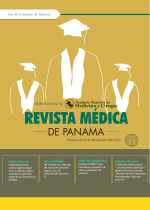Evaluación Y Manejo De La Enfermedad Temprana Y Localmente Avanzada: 1er Consenso Nacional Del Cáncer De Mama de la Sociedad Panameña de Oncología (SPO)
Autores/as
DOI:
https://doi.org/10.37980/im.journal.rmdp.2019799Resumen
[Evaluation and Management of Early and Locally Advanced Disease: 1st National Consensus of Breast Cancer of the Panamanian Society of Oncology (SPO)]Resumen
El manejo de los pacientes con cáncer de mama temprano o localmente avanzado requiere de la evaluación inicial de un grupo de médicos familiarizados con el diagnóstico, estadificación y tratamientos de estas enfermedades, de tal manera que se pueda optimizar los resultados no solamente oncológicos (Curación), sino también cosméticos. La decisión sobre el tratamiento local (cirugía y Radioterapia) y sistémico (Quimioterapia y Hormonoterapia) está basada en las características clínicas y moleculares de tumor, así como por las preferencias del paciente.
Summary
The management of patients with early or locally advanced breast cancer requires the initial evaluation of a group of physicians familiar with the diagnosis, staging and treatment of these diseases, in order to optimize the results not only oncological (Healing), but also cosmetics. The decision on local treatment (surgery and Radiotherapy) and systemic treatment (Chemotherapy and Hormonotherapy) is based on the clinical and molecular characteristics of the tumor, as well as on the patient's preferences.
Publicado
Número
Sección
Licencia
Derechos autoriales y de reproducibilidad. La Revista Médica de Panama es un ente académico, sin fines de lucro, que forma parte de la Academia Panameña de Medicina y Cirugía. Sus publicaciones son de tipo acceso gratuito de su contenido para uso individual y académico, sin restricción. Los derechos autoriales de cada artículo son retenidos por sus autores. Al Publicar en la Revista, el autor otorga Licencia permanente, exclusiva, e irrevocable a la Sociedad para la edición del manuscrito, y otorga a la empresa editorial, Infomedic International Licencia de uso de distribución, indexación y comercial exclusiva, permanente e irrevocable de su contenido y para la generación de productos y servicios derivados del mismo. En caso que el autor obtenga la licencia CC BY, el artículo y sus derivados son de libre acceso y distribución.






